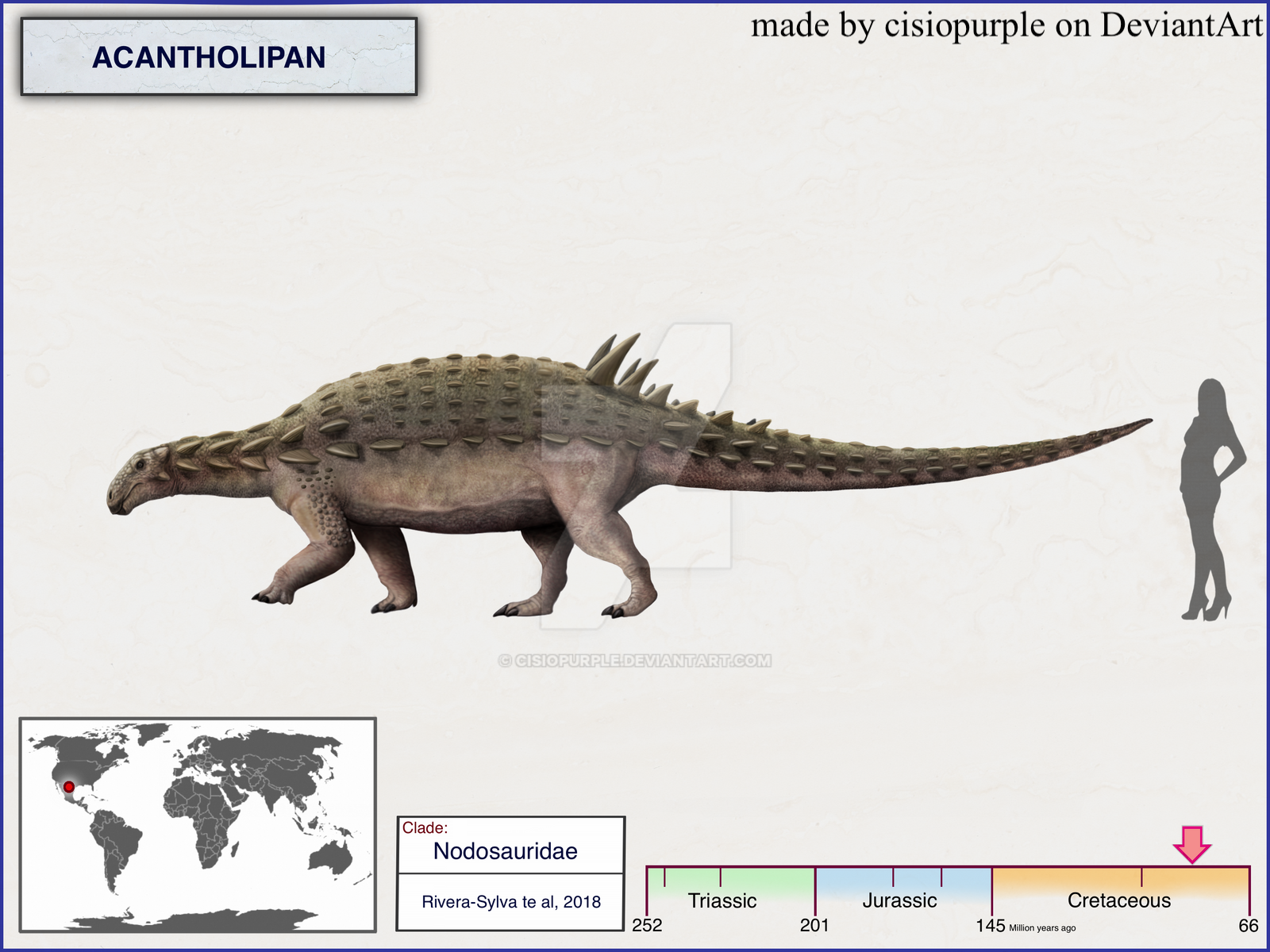Welcome to Acantholipan

Name Definition
Spine of the Gray People (named after the Lépai-Ndé tribe in Spanish)
Name Given By
Héctor Eduardo Rivera-Sylva, Eberhard Frey, Wolfgang Stinnesback, Gerardo Carbot-Chanona, Iván Erick Sanchez-Uribe, and José Rubén Guzmán-Gutiérrez in 2018
Location
Northern Mexico as well as the Pen Formation that is now in the western U.S.
Classification
Dinosauria, Ornithischia, Thyreophora, Ankylosauria, Nodosauridae
Size
Adult size is estimated to be around 1.5 meters tall (4.9 ft), around 6 meters long (19.6 ft), and about 2.5 tons (2267.9 kg)
Temporal Range
Santonian age of the Late Cretaceous, approximately 83 million years ago
Ecological niche
Heavily-built armored herbivore
Species/Sub Species
A. gonzalezi
Diet
Acantholipan would have consumed low-lying plants such as ferns and cycads
Introduction
Acantholipan is a genus of armored nodosaurid dinosaurs that lived in Mexico during the Cretaceous period. Acantholipan derives from the Greek word akanthos which means “spine” as well as lipan which is the Spanish name for the Lépai-Ndé tribe, nicknamed the “Gray People”, which is a tribe of the Apache people which lived at where Acantholipan was discovered. The specific name gonzalezi honors Spanish paleontologist Arturo Homero González-González, who is also the chairman of the Museo del Desierto (Desert Museum) which houses the Acantholipan holotype in Saltillo, the largest city in the Mexican state Coahuila. Acantholipan is the first dinosaur of its kind to be discovered in Mexico.
In the past, fragmentary fossils of nodosaurids have been reported from the north of Mexico. The original skeleton of Acantholipan was discovered in the Pen Formation of Coahuila, Mexico, and was described in 2011. Initially, Rivera-Sylva and colleagues considered the skeleton to be fragmentary to provide a name, though later in 2018 it was judged that the skeleton was distinct enough and was given the binomial name Acantholipan gonzalezi by Rivera-Sylva et al.
The holotype specimen, catalogued CPC 272, was found in a marine layer of the Pen Formation and has been dated back to the Santonian stage of the Late Cretaceous, approximately 83.6 million years ago. The holotype is known from a partial postcranium and lacks a skull. The postcranium consists of a dorsal vertebra, a caudal vertebra, a piece of rib bone, the distal end of the left humerus, the proximal portion of a left ulna, the distal end of a left femur, and a spike-shaped osteoderm that might be from the back of the thorax (the chest).
In life, Acantholipan is commonly depicted as a normal nodosaurid with no club tail, spiky osteoderms running over the back and on the sides of the body, and a tall group of spiky osteoderms that lie right above the sacrum, so it would make it look like there would be tall spikes around the base of the spine.
Sources:
- https://en.wikipedia.org/wiki/Acantholipan
- https://blog.everythingdinosaur.co.uk/blog/_archives/2018/06/15/mexicos-oldest-member-of-the-ankylosauria.html
- https://www.facebook.com/387756681326078/posts/acantholipan-gonzalezi-rivera-sylva-frey-stinnesbeck-carbot-chanona-sanchez-urib/2476974685737590/